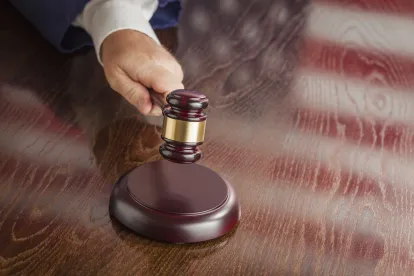Last Friday, the U.S. Court of Appeals for the First Circuit ruled that two co-investing Sun Capital private equity funds (the Sun Funds)[1] had not created an implied “partnership-in-fact” for purposes of determining whether the Sun Funds were under “common control” with their portfolio company, Scott Brass, Inc. (SBI) – resulting in a ruling that the Sun Funds were not under “common control” with SBI or a part of SBI’s “controlled group” and, therefore, that the Sun Funds could not be held liable for SBI’s multiemployer pension fund withdrawal liability. This ruling marks the end (for now) to the seven-year Sun Capital dispute (see our prior client alert here). Read below for a high-level summary of the First Circuit’s ruling, as well as key takeaways for private investment funds and multiemployer pension funds. A forthcoming client alert will include more detailed analysis of the First Circuit’s decision, the history of the Sun Capital saga, and the implications for private investment funds and multiemployer pension funds. Check back here for the link to the alert.
Factual and Procedural Background
As a refresher, in Sun Capital, the Sun Funds acquired 100% of SBI through SBI’s ultimate parent, Sun Scott Brass, LLC (SSB). Sun Fund III owned 30% of SSB while Sun Fund IV owned 70% of SSB. SBI eventually filed for bankruptcy and withdrew from a multiemployer pension fund. As a result, the pension fund asserted withdrawal liability against the Sun Funds on the theory that the Sun Funds were both (i) under “common control” with SBI (which, in relevant part, generally requires an 80% or greater ownership interest), and (ii) engaged in a “trade or business” and, therefore, in SBI’s “controlled group” (which, if true, meant the Sun Funds would be jointly and severally liable for SBI’s withdrawal liability).
Following an initial round of rulings, in 2016, the U.S. District Court for the District of Massachusetts determined that the Sun Funds had formed a “partnership-in-fact” that was part of SBI’s “controlled group” because the implied “partnership-in-fact” was deemed to own 100% of SSB (and, therefore, SBI) and was engaged in a “trade or business”; and, that the Sun Funds could therefore be held liable for SBI’s withdrawal liability as partners in the implied “partnership-in-fact”.
First Circuit Decision
On appeal of the District Court’s decision, the First Circuit limited its analysis to a single issue: whether the record demonstrated that the Sun Funds had formed a “partnership-in-fact” under the U.S. Tax Court’s eight-factor Luna test.
The First Circuit noted that several facts in the record supported finding a partnership-in-fact between the Sun Funds. For example, the Sun Funds, through their manager Sun Capital Advisors, Inc. (SCAI), developed restructuring and operating plans for target portfolio companies before actually acquiring them through limited liability companies; the two individuals in control of the general partners of the Sun Funds “essentially ran things” for the Sun Funds and SBI, including placing SCAI employees in two out of three director positions at SBI, allowing SCAI to “control” SBI; the Sun Funds had leveraged SCAI’s resources and expertise to not only identify, acquire, and manage portfolio companies, and structure their acquisitions, but also to provide management consulting and employees to the portfolio companies; and the record did not show a single disagreement between the Sun Funds regarding the operation of SSB.
However, on balance, the First Circuit concluded that more factors weighed in favor of finding that a partnership-in-fact did not exist, pointing to the following facts: the Sun Funds did not intend to form a partnership beyond their coordination within SSB and expressly disclaimed any sort of partnership; most of the limited partners in Sun Fund IV were not limited partners in Sun Fund III; the Sun Funds filed separate tax returns, kept separate books and maintained separate bank accounts; the Sun Funds did not invest in parallel in the same companies at a fixed or even variable ratio – which the First Circuit observed showed “some independence in activity and structure”; and the creation of a limited liability company (i.e., SSB) by the Sun Funds showed an “intent” not to form a partnership, and prevented them from conducting their business in their joint names and limited the manner in which they could exercise mutual control over and assume mutual responsibilities for managing SBI.
Having determined that the record pointed away from concluding that the Sun Funds had created an implied “partnership-in-fact” in connection with their investment in SBI – meaning their ownership interests could not be aggregated for purposes of determining whether they were under “common control” with SBI – the First Circuit held that the Sun Funds could not be held liable for SBI’s multiemployer pension fund withdrawal liability. The First Circuit expressly declined to reach the other legal issues in the case – including whether the Sun Funds were engaged in a “trade or business.” The First Circuit remanded the case to the District Court for entry of summary judgment in favor of the Sun Funds.
Key Takeaways
In light of the First Circuit’s decision, here are a few key points for private investment funds and multiemployer pension plans to consider:
-
The First Circuit did not rule on the “trade or business” issue, so the existing Sun Capital “trade or business” analysis remains intact. Further, there is still the possibility of two or more co-investing private investment funds being deemed to be engaged in a “trade or business” and under “common control” with a portfolio company under a “partnership-in-fact” analysis. While the First Circuit found that such a “partnership-in-fact” did not exist here under the facts, different facts could lead to a different holding in the future.
-
Accordingly, this ruling should not preclude, but it may hamper, the efforts of multiemployer pension plans and the PBGC to collect plan termination and withdrawal liability from private investment funds (and their other portfolio companies) based on a “partnership-in-fact” analysis.
-
In any event, as we have previously noted, private equity fund sponsors should be aware that (i) acquiring an 80% (or more) interest in a portfolio company, whether within one private equity fund or pursuant to a “joint venture” between related (and maybe even unrelated) funds, may trigger joint and several liability for the portfolio company’s underfunded pension or withdrawal liabilities, and (ii) even a smaller ownership interest percentage could possibly trigger the ERISA “controlled group” rules based on complicated “common control” determinations.
* * *
[1] Although the First Circuit referred to “two” co-investing funds, there were actually three separate funds –Sun Capital III, LP, Sun Capital III QP, LP and Sun Capital IV, LP (Sun Fund IV). The First Circuit treated the two Sun Capital III funds (i.e., Sun Capital III, LP and Sun Capital III QP, LP) (Sun Fund III) as one fund because they are parallel funds run by the same general partner and generally make the same investments in the same proportions. Accordingly, the remainder of this blog generally follows the First Circuit’s analysis as though there were only two funds, Sun Fund III and Sun Fund IV.







 />i
/>i

